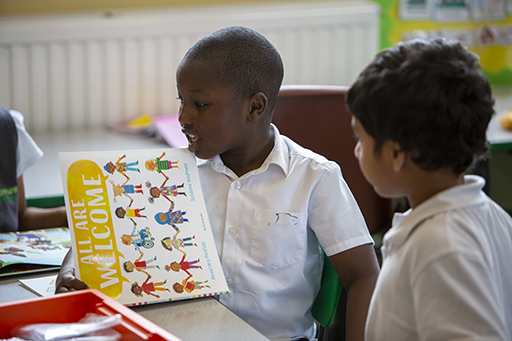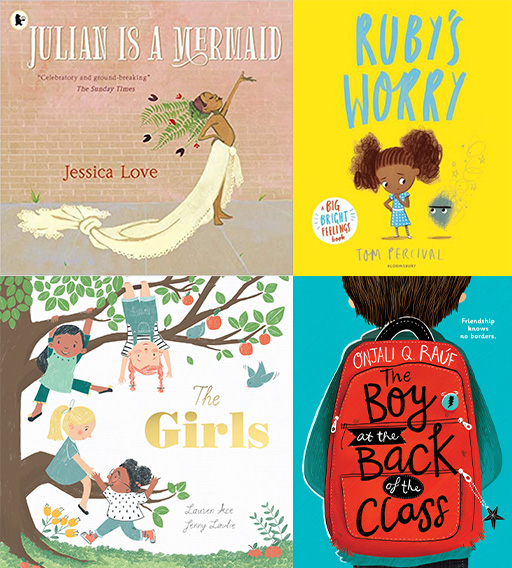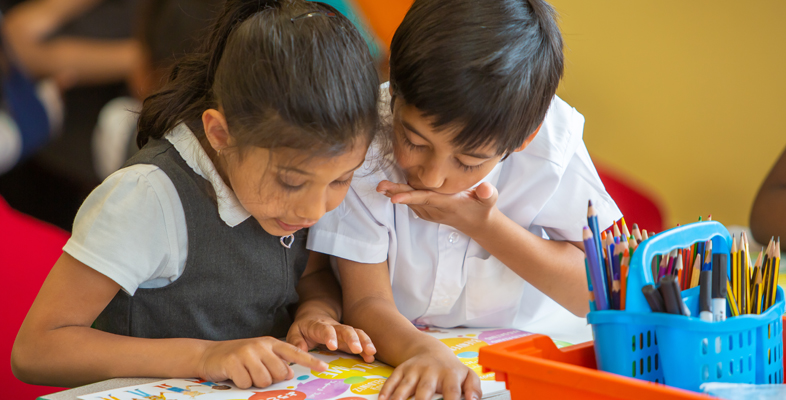5 Promoting equality, diversity and inclusion through children’s literature
As discussed in Session 2, children’s texts include a wide body of written and illustrated work, however in this section you will focus on ‘narrative texts’ that broadly come under the genre of children’s literature. It is a genre that tends to be defined by its audience, rather than its subject matter. Children’s literature is expansive, it includes fairy tales, traditional tales, historical fiction, fantasy, dystopian futures, science fiction, mystery, action and adventure, biographies and autobiographies, and more.

Narratives are presented in children’s literature in diverse ways. Written accounts may be told in the first or third person, and narrative can be creatively told in poetry, verse or through image, such as wordless picture books, graphic novels, comics and websites.
As you read in Section 9 of Session 1, regardless of theme or subject matter, characters, events and situations in narrative texts act as metaphorical ‘mirrors, windows and sliding glass doors’ (Bishop, 1990), and play a significant role in transmitting a society’s culture. Literature enables children to see what the world may look like from another’s perspective and provides opportunities for them to construct their views of self and the world (Tsao, 2008).
Children’s narrative texts (and all texts) reflect a society’s culture captured from the author’s perspectives at a moment in history; however, cultural attitudes, values and beliefs evolve and progress over time. This means that issues like gender bias remain evident in children’s literature collections in libraries, in classrooms and on bookshelves. Many children’s books, including some much-loved classics, convey sexist cultural messages that women don’t work or do certain types of jobs, and that it is only men that fix things and make decisions (Persiani-Becker, 2011).
For example, the children’s picture book, The Tiger Who Came To Tea, was written by Judith Kerr in 1968, yet it is still popular in the UK today and has sold over a million copies. In this story, after the tiger wreaked havoc in the kitchen, Sophie’s mother begins the clean-up declaring, ‘I’ve got nothing for Daddy’s supper’. It is also notable that it is ‘Daddy’s’ beer that the tiger drunk, and it is ‘Daddy’ who decides that they should go to a café. This is just one example of how children’s books convey messages about gender roles.
In the same way that gender bias remains evident in children’s literature, characters from diverse ethnic backgrounds, characters with disabilities, and diverse families continue to be sorely under-represented in children’s texts in the UK. This does not mean that you should reject all children’s classics and traditional fairy tales; but it is imperative to engage critically with these books and challenge prejudice, bias and cultural stereotypes through book talk and wider discussion with children and young people.

In more recent years, many children’s authors have sought to promote equality and social justice by subtly raising awareness of unfair and unequal conditions in the world through their writing. Authentic representations of cultural and ethnic diversity in literature validate the experiences and sense of belonging for children from minority backgrounds. Positive portrayals of people with disabilities and representations of diverse families in literature promote understanding and inclusion. Through these stories, society becomes more knowledgeable and open in their interactions, and children whose life experiences are reflected in a book come to understand that they are not alone. You will read more about developing your knowledge of diverse children’s texts in Session 4.
Activity _unit4.5.1 Activity 2 Reviewing representations of equality, diversity and inclusion in your texts
Randomly select one or two narrative texts that you know well and that you have recently read with children (you might like to select one picture storybook and one children’s novel). Briefly re-familiarise yourself with each one and then make a note of your responses to the following questions.
(Adapted from Persiani-Becker, 2011).
- Are characters presented as unique and distinctive personalities, regardless of gender, culture, ethnicity, disability or background?
- Does the narrative link the characters’ activities or achievements to gender, culture, ethnicity, disability or background? If so, does it challenge or sustain stereotypes?
- Are occupations represented as gender and culture neutral?
- Are characters’ sensibilities, feelings and responses portrayed as gender and culture neutral?
- Are families only represented as two-parent or male / female couples?
Comment
This activity further illustrates why it is so important that educators have a good knowledge of children’s literature and other texts, and critically evaluate the texts that are made available to children in school.
All children deserve the opportunity to see themselves and their peers positively represented in books. Whilst children’s literature offers a reflection of a society, it also offers a medium for discussion about sensitive issues and tricky topics.
